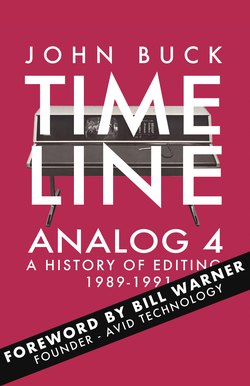Читать книгу Timeline Analog 4 - John Buck - Страница 17
На сайте Литреса книга снята с продажи.
PHOTOMAC
ОглавлениеThe Mac II became the IIx with the Motorola 68030 processor and joined Commodore’s Amiga, NeXT’s Cube and Sun’s 3/80 workstation as a potential platform for digital video.
In late 1988 the Avalon Development Group in Cambridge began shipping PhotoMac which let publishers perform many pre-press functions on a standard Macintosh. Dr Rudy Burger told the press:
Color publishing is no longer the exclusive domain of the professional pre-press house. It has finally reached the desktop.
Data Translation, a neighbour in Marlboro, had to this point supplied only PC users with hardware boards but it could see that publishing was moving to the Macintosh. They needed a way to acquire and manipulate colour still images for that platform. In house engineer Ned Kroeker recalls:
Data Translation became involved at arm's length with Avalon to see how we could grow new markets for our boards. And PhotoMac was Photoshop, before Photoshop was Photoshop.
The U.S. company L.L. Bean was a well established trusted source for quality apparel and reliable outdoor equipment. It had started as a single product company in a similar vein to Data Translation. Electronics Magazine asked:
Can Data Translation translate its L.L. Bean expertise to a new market? The mail-order supplier of data acquisition boards is jumping into Macintosh image processing.
Data Translation re-designed the PC based product QuickCapture for the Macintosh and within months PhotoMac and a dozen other companies were bundling it with their software. DT's John Fierke continues:
We ended up selling to a lot of newspapers and media outlets, as at that time there was no other way to get a video file to your computer.
Marshall Housekeeper landed a summer job at DT converting existing code.
After getting my degree, I started a full time position at DT working on the QuickCapture and ColorCapture frame grabber cards for the Macintosh. With the success of these cards, DT contemplated developing full frame video hardware.
John Fierke knew that it would take an extraordinary effort to make the leap from capturing one video frame from a video camera for PhotoMac to acceptable real-time video results at 30 or 25fps. In order for video to be manipulated by a desktop computer, the signal had to be digitized into pixels.
A standard full-frame broadcast image contains more than 10 million pixels that in turn had to be dealt with continuously. Fierke recalls:
There were projects at Data Translation trying to grab NTSC color video and the lesson from that was that ‘basic’ components to do this gave really lousy results.
